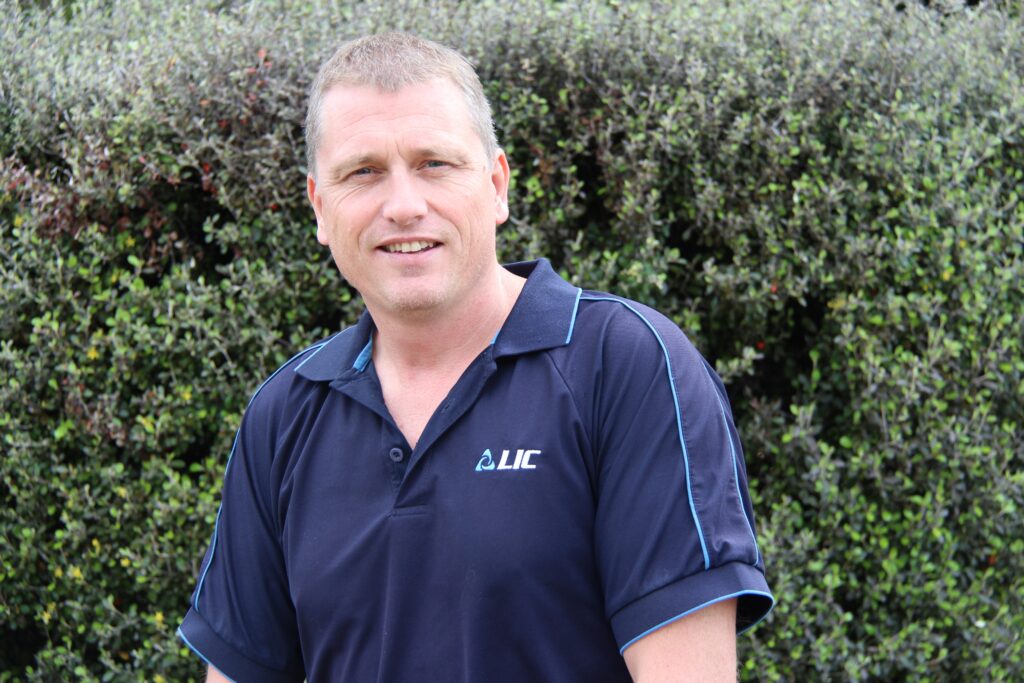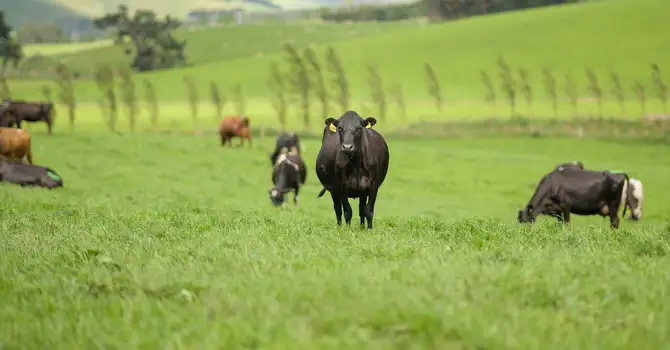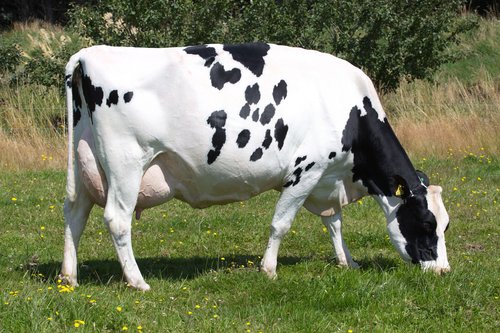Greg Peddle explains how building a solid base from making the right decisions at the very start has driven profitability.
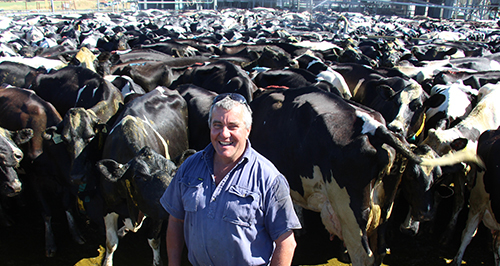
Greg and Kim have built a thriving self- sufficient dairy and fodder production business in East Gippsland during the past 34 years.
Returning to the family farm at age 21, after finishing a mechanic apprenticeship, Greg went on to purchase his family’s 180 milking herd and later bought the farm. For 20 years he also worked simultaneously as a contractor.
“The biggest thing is just having a red-hot-go,” Greg said. “When you are younger you just bite off more than you can chew and chew like buggery. That’s how you get going and that sets you up for later in life.”
The Peddle farm now includes 1650 acres, with 970 acres under irrigation – 500 acres of which includes the milking platform.
The irrigation infrastructure includes: six centre pivots, one linear move irrigator and 200 acres of bike shift lateral irrigation.
Thanks to irrigation and a vigorous fertiliser program, the Peddles have optimised on-farm pasture and forage production. Greg said irrigation has helped double the amount of topsoil on this country – they now have about 200mm and the ‘spewy’ unproductive layer has disappeared.
Fertiliser trucks follow the cows with applications every rotation across the milking platform. Pastures are topped during spring, summer and early autumn.
Across parts of the irrigation area, 1 tonne a hectare of magnesium potash lime is applied to boost soil health.
Perennial ryegrass dominates the dairy platform, with regular cultivation renewing pastures for maximum productivity.
Maize was included for the first time recently, with a harvest in 2019 meeting expectations for their initial crop.
They cut almost 27 tonne/hectare, installed their own weighbridge and sold about 4000 tonnes of their entire 6500 tonne haul.
Greg said maize sales helped make the crop viable. A year later, a lack of sunshine meant the crop only yielded 20tonne/hectare and sale demand was quieter. To counteract the fluctuation in maize purchasing, Greg and Kim are now building larger storage with plans to sell the crops every three years or so.
Owning their harvesting equipment Greg says. “We optimise our harvest and planting times, we don’t have to wait for contractors or anything like that.”
Spreading fertiliser and artificial insemination are the only two farm jobs outsourced. Everything else, are completed by Greg, Kim and their team including a farm manager, a milker and dairy casual, one-to-two farm workers and some casuals.
Building a solid base
While showing farmers and breeding advisors around his farm, Greg Peddle scrolls through his dairy computer program, highlighting how he puts together his cull list.
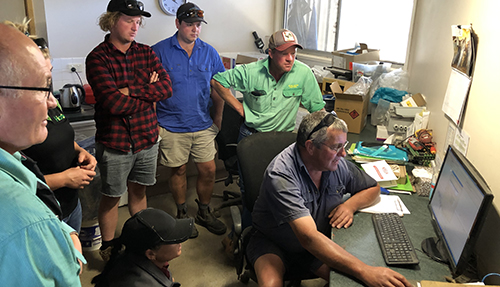
“Any slow milking cows, they are on the list. Ideally they would take about nine and a half minutes, any longer – even if its half a minute longer and they are doing 50 litres – it’s still too long” the Yarram dairy farmer explains.
Later, Greg explained how he and wife Kim had selectively removed animals from their 800-850 milking herd to ensure they were left with the best and most suitable for an efficient operation.
This included those who milked long enough to have two laps on the rotary platform.
“That (culling) cost us a reasonable amount in the last few years, but we are on our way back and it is a much better work environment,” Greg said.
“Milking times have dramatically reduced. We are milking 800-850 cows whereas the average person, during the same time, would only milk 650 cows.”
Prioritising employee comfort and convenience by streamlining farm processes was a conscious business decision for Greg and Kim.
From the outside these choices may not make obvious economic sense, but the Peddles insist these decisions have underpinned their profitability – even during tough years.
“What’s the most important asset on a farm? People, and it is all driven by that. We have long term employees, hardly anyone leaves. Most of our decisions are based around that. Production and profitability come along as a consequence, because you make the right decisions in the first place.”
Greg Peddle
Breeding the next generation
New Zealand genetics – dominated by LIC bloodlines – underpin the Peddle’s split calving New Zealand Friesian dairy herd.
The decision to divide calving between autumn and spring was about maximising the value of their milk, following changes to the way dairy processors paid for the white stuff.
It’s also helped manage the workload of calving and help retain staff.
“Staff can almost have full time casual work for 10 months of the year and it means you can keep your calf rearers from one year to the next,” Greg said. “Otherwise, they only have work for four to five months and then they’d have to find something else.”
These phenomenal heifer numbers have enabled Greg and Kim to stringently cull while maintaining high fertility and production.
It has also negated the need to buy- in cows, something they used to do as a way to measure the quality and progress of their own breeding program.
An example of how Greg and Kim have made the most of their extra heifers includes their joining program. A mature cow producing less than 30 litres a day doesn’t get joined, neither does a heifer producing less than 22 litres a day. These benchmarks are climbing each year, according to Greg.
Average annual production sits at about 9000 litres a cow or about 700 kg of milk solids per cow for the average 570 to 580 kg liveweight herd.
This is lower than production had been, as the herd is relatively young following the removal of the slow milking cows, those with feet problems or any other health issues.
Fertility focus
Fertility has always been a priority for the couple and it’s something they won’t compromise on when they started using LIC genetics over 20 years ago.
“The main reason we swapped to LIC was we were chasing fertility but along with that came temperament,” Greg said. “The first heifers from LIC was something that the workers and I will never forget. It was a very even line of heifers and their temperament was terrific. Once we got our fertility back up there and then the number of heifers, we could put pressure on the herd more and drop-off that bottom tier quicker and increase production.”
Greg said he prefers to select about three bulls annually and uses them across the herd.
Their breeding program is 100 per cent artificial insemination and only proven bulls are used.
Pushing production again, following the recent clean-out of cows to increase efficiency, Greg’s chasing a specific goal.
“I think the new catch phrase in the dairy industry should be 10:10,” he said. “Ten per cent or under not in calf rate and 10,000 litre per cow.”
On track to achieve the latter again, Greg believes the former is one of the keys to profitability as its linked to herd pressure.
Frozen sexed semen is used across all maiden heifers – plus another 60 cows in the herd Greg deems easiest to get in calf.
“Basically, we try and get every heifer to cycle,” Greg said. “We use a Why WAIT program, observe and inseminate for 11-14 days…then we PG the rest and inseminate what comes on heat. Then we use a GNRH injection four days later and then if there’s still a number – like this year there was 20 that didn’t cycle – we keep them separate for a week, seven days later give them a PG and then inseminate with sexed semen.”
The Peddles have a strong focus on heat detection, using tail paint and then drafting cows into their activity system for monitoring.
This confirms they are cycling, when they cycled last and their production ‘status’ at joining. This computer system allows Greg to make joining decisions.
When it comes to breeding, Greg and Kim focus on medium framed animals and longevity. This includes good vessels and the basics of production to ensure they have the capacity to reach 40-50 litres/cow/day as mature animals.
The milking herd’s diet includes a grain base of about 4 kg/cow/day – traditionally wheat – but this year its barley due to the $70 a tonne price difference. On top of this is 500g/ cow/day of a Ridley mineral pellet, the same volume of canola meal and about 125g/cow/day of Calciprill – a source of calcium.
Maize silage has further boosted the herd’s in-calf rate and is fed for nine months of the year.
These immediate and obvious results are what Greg loves about dairy farming.
For him, its satisfying working with the next generation and those looking to learn more about the industry, such as high school and overseas students. Greg was happy to outline details of his business for those who will take the industry into its next phase.
“Being able to influence or inspire some young fellas to have a go, it’s a bit of a rush,” he said.
This article published in our Autumn 2021 Green to Gold publication.

